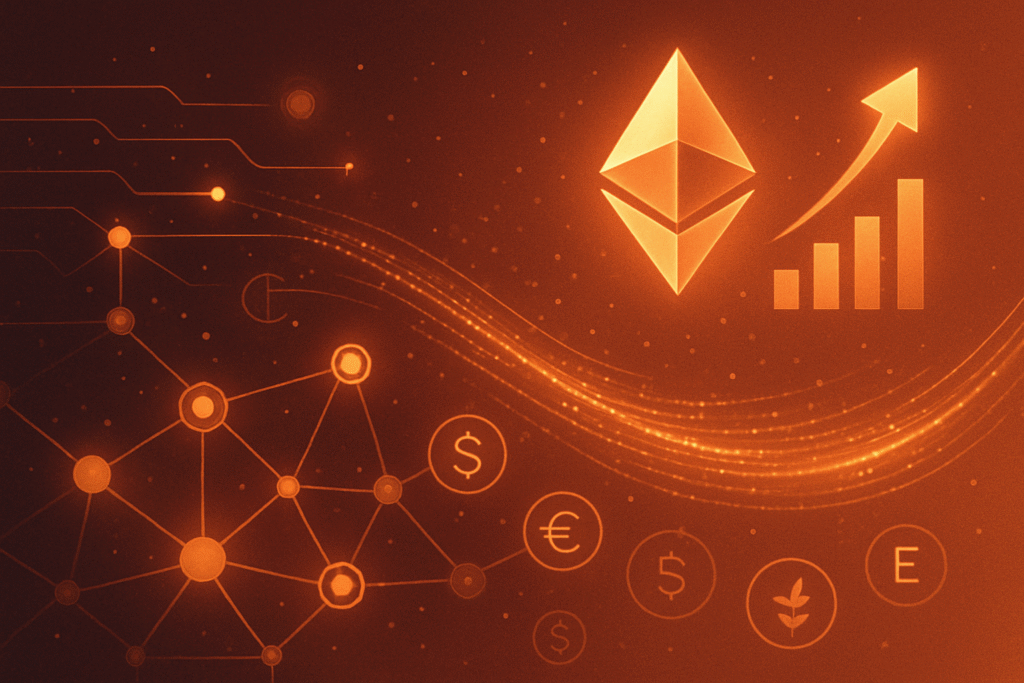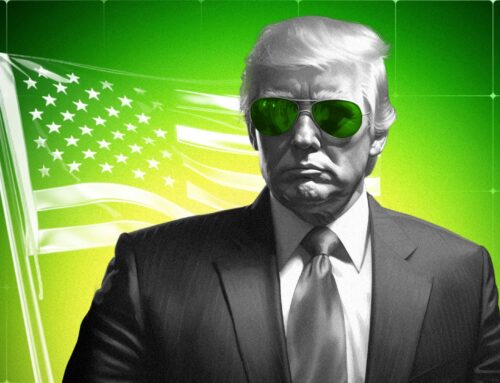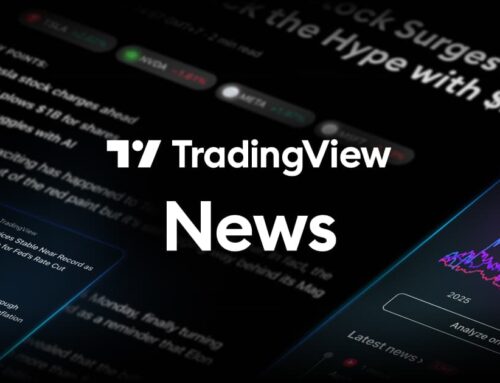Ethereum: Far From Dead, Thriving Amidst Upgrades, ETFs, and Staking Surge
October 12, 2025
October 12, 2025 – The question “Is Ethereum dead or alive?” has been definitively answered in late 2025: Ethereum (ETH) is not only alive but thriving, experiencing a profound resurgence driven by monumental protocol upgrades, the groundbreaking approval and success of spot ETH Exchange-Traded Funds (ETFs), and unprecedented growth in its staking ecosystem. This period marks a pivotal moment for the world’s leading smart contract platform, solidifying its position as a cornerstone of the digital economy.
The past year has witnessed a flurry of transformative developments, most notably the Dencun upgrade in March 2024 and the Pectra upgrade in May 2025. These technical advancements, coupled with the U.S. Securities and Exchange Commission’s (SEC) approval of spot Ethereum ETFs in 2024, have injected fresh capital and institutional legitimacy into the network. Simultaneously, Ethereum’s staking mechanism has continued its meteoric rise, with a significant portion of the total ETH supply now locked, demonstrating robust network security and investor confidence. This confluence of technological innovation, regulatory acceptance, and growing participation underscores Ethereum’s enduring relevance and its critical role in shaping the future of decentralized finance (DeFi), NFTs, and the broader Web3 landscape. For the crypto ecosystem, these developments signify a maturing market, where foundational technologies are not only evolving but also gaining mainstream financial recognition, paving the way for broader adoption and innovation.
Market Impact and Price Action
Ethereum’s market performance leading up to and in late 2025 reflects a largely bullish sentiment, punctuated by periods of significant inflows and natural market corrections. Over the past year, ETH has seen an impressive surge of approximately 83%, showcasing strong investor confidence and the impact of fundamental improvements. Analysts widely project ETH to reach between $5,400 and $6,600 by the end of 2025, with some even forecasting highs between $8,500 and $12,200, driven by network upgrades and institutional interest.
The approval of spot Ethereum ETFs has been a game-changer, attracting substantial institutional capital. Firms like BlackRock (NYSE: BLK) and Fidelity have seen their spot Ethereum ETFs accumulate over $12.1 billion in assets under management (AUM) by July 2025, with a staggering $4 billion in net inflows recorded in August alone. BlackRock’s iShares Ethereum Trust (ETHA) alone surpassed $5.6 billion in AUM in July. This influx of capital led to a significant reduction in exchange-held ETH reserves, dropping to a three-year low in late August 2025, indicating a strong move towards long-term holding and institutional accumulation.
However, the market has not been without its fluctuations. While spot Ethereum ETFs recorded an impressive $1.97 billion in inflows over an eight-day streak ending October 9, 2025, subsequent days saw notable outflows. On October 9, ETFs experienced an $8.54 million outflow, and on October 10, US Ethereum spot ETFs registered a total net outflow of $174.9 million. These movements highlight the inherent volatility of crypto markets and suggest that some capital may be rotating, potentially into Bitcoin (BTC) ETFs or other assets. Despite these short-term shifts, the overall trend of institutional engagement and demand for ETH remains robust, establishing new support levels and a higher baseline for Ethereum’s market valuation.
Community and Ecosystem Response
The Ethereum community and broader ecosystem have responded with overwhelming positivity to the network’s advancements, largely dismissing the “dead or alive” debate as settled in favor of a vibrant, thriving platform. Social media sentiment across platforms like X (formerly Twitter) and Reddit consistently reflects enthusiasm for Ethereum’s improved scalability, reduced transaction costs, and growing institutional validation. Crypto influencers and thought leaders frequently laud Ethereum’s continuous innovation and its foundational role in the decentralized world.
The Dencun upgrade, with its proto-danksharding (EIP-4844) implementation, significantly impacted Layer 2 (L2) solutions, cutting transaction costs by up to 98% for platforms like Arbitrum and Starknet and boosting L2 throughput to 136.5 transactions per second. This has directly benefited related DeFi protocols, NFT projects, and Web3 applications by making them more accessible and affordable for end-users. The Pectra upgrade further solidified this by increasing blob throughput and introducing “smart accounts,” enhancing user experience and validator efficiency.
Ethereum’s developer community remains unparalleled, boasting more active developers than the next five smart-contract platforms combined, a testament to its ongoing innovation. This robust activity is reflected in user growth, with over 31.5 million new unique addresses created in the first half of 2025, nearly matching the total growth for all of 2024. Daily active users consistently hover between 380,000 and 420,000, demonstrating sustained engagement. The integration of staking into several US-listed spot Ethereum ETFs, offered by firms like Grayscale (OTCQX: GBTC) and 21Shares, has also been met with enthusiasm, providing investors with a new avenue to earn yield directly through regulated financial products.
What’s Next for Crypto
The immediate and long-term implications for the crypto market, particularly concerning Ethereum, are profoundly positive. Short-term, the market will likely continue to digest the implications of increased institutional participation and the ongoing adoption of L2 solutions. Ethereum’s strategic shift towards supporting L2s through upgrades like Dencun and Pectra positions it as a scalable and efficient base layer for the entire Web3 ecosystem. The continued flow of institutional capital into spot ETH ETFs is expected to provide sustained buying pressure and further legitimize the asset class.
Looking ahead, several potential catalysts are on the horizon. The planned “Fusaka” upgrade, expected in late 2025 or early 2026, will focus on overhauling Ethereum’s data structures, including the integration of Verkle Trees for improved data storage and retrieval efficiency. This, along with future developments like PeerDAS in 2026, promises further scaling capabilities and enhanced network performance. For projects, the strategic consideration is to continue building on or integrating with Ethereum’s expanding L2 ecosystem to leverage its scalability and reduced costs. Investors should monitor the progress of these upgrades and the sustained interest from institutional players.
Possible scenarios for Ethereum’s future are largely optimistic. With enhanced scalability, a robust developer community, and growing institutional validation, Ethereum is well-positioned to maintain its dominance as the leading smart contract platform. However, challenges such as market volatility, competition from rival chains like Solana, and potential regulatory shifts (though some staking-related risks have been mitigated by ETF structures) remain factors to watch. The most likely scenario involves continued growth, innovation, and a deepening integration of Ethereum into traditional finance through regulated products.
Bottom Line
For crypto investors and enthusiasts, the key takeaway is clear: Ethereum is not only alive but thriving, demonstrating remarkable resilience and an unwavering commitment to innovation. Its journey through significant protocol upgrades, the mainstreaming of spot ETH ETFs, and the explosive growth of its staking ecosystem underscores its long-term significance in the digital asset space. Ethereum’s role as the foundational layer for DeFi, NFTs, and Web3 applications is stronger than ever, driving broader crypto adoption by providing a secure, decentralized, and increasingly scalable platform.
The long-term significance of these developments cannot be overstated. Ethereum’s evolution towards a more efficient and user-friendly network, coupled with institutional acceptance, is crucial for bridging the gap between traditional finance and the decentralized world. The introduction of smart accounts and improved validator management through upgrades like Pectra are vital steps towards enhancing the overall user experience and making Web3 more accessible to a global audience.
Important dates, events, and metrics to monitor include the progress and implementation of the upcoming Fusaka upgrade, the sustained inflow and outflow trends of spot Ethereum ETFs, the dynamics of the staking queue (especially in light of the record exit queue in early October 2025), and the continued growth and adoption metrics of Layer 2 solutions. These indicators will provide crucial insights into Ethereum’s ongoing health and its trajectory in the rapidly evolving cryptocurrency landscape.
This article is for informational purposes only and does not constitute financial or investment advice. Cryptocurrency investments carry significant risk.
Search
RECENT PRESS RELEASES
Related Post





